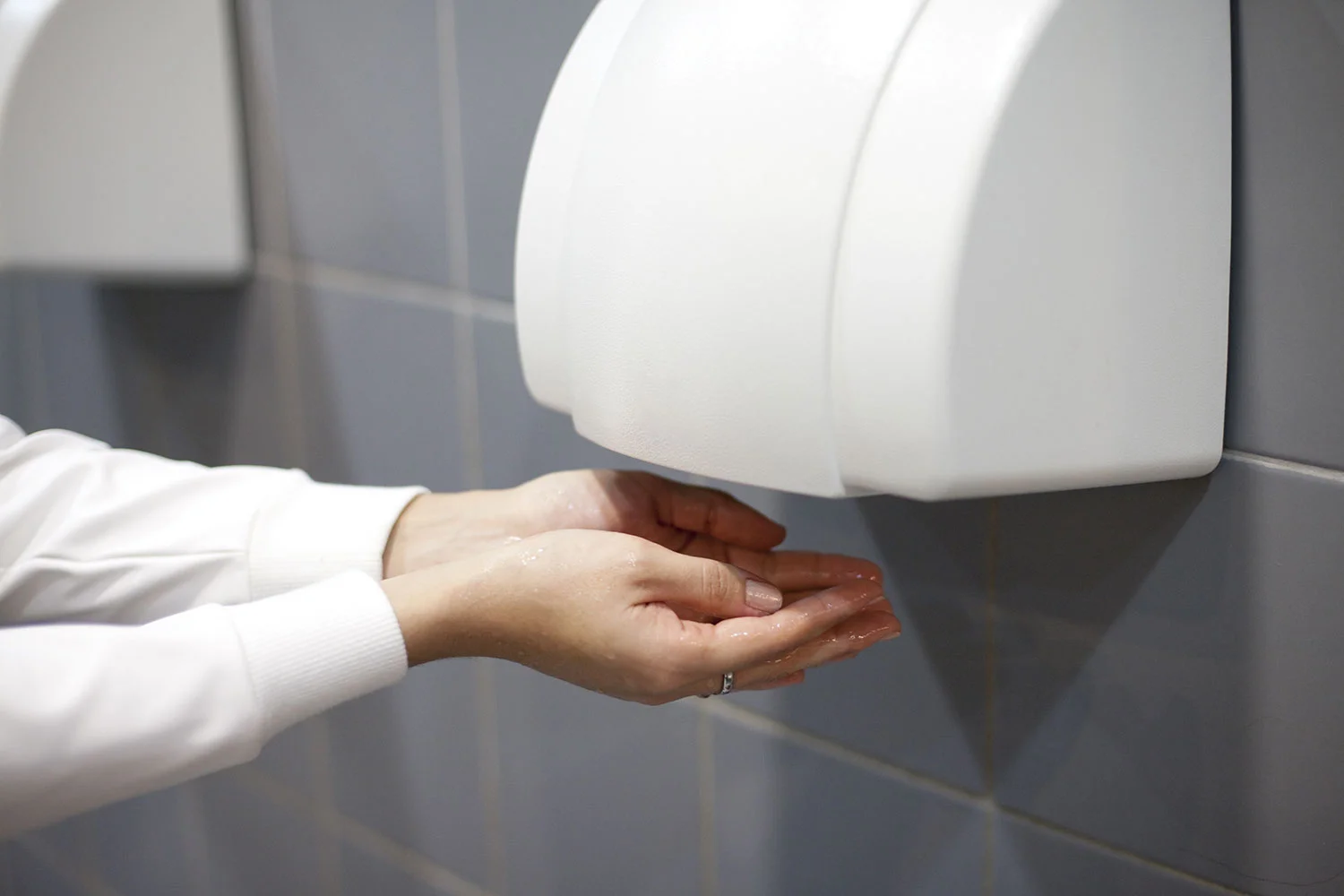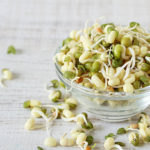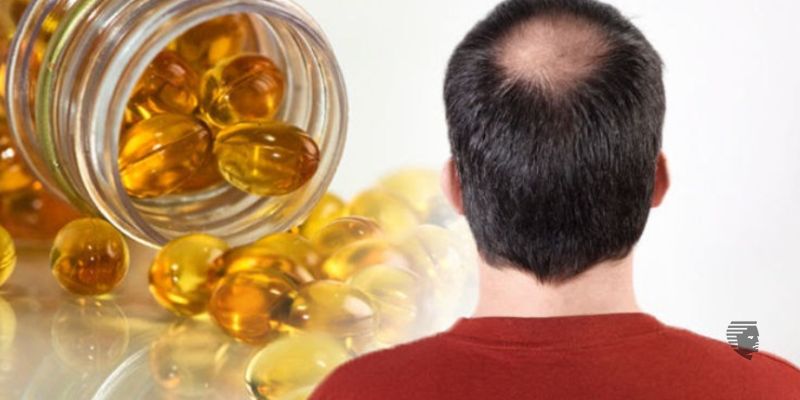Introduction/Quick Snapshot:
Hand Dryers and Skin Health: Tips to Prevent Dryness and Irritation: Struggling with dry, irritated hands from hand dryers? Discover how heat and airflow impact your skin and learn expert tips to protect it. From choosing the right dryer to using hydrating products, keep your hands soft, healthy, and irritation-free!
Have you ever wondered if how you dry your hands could harm your skin? While hand hygiene is non-negotiable for health, the widespread use of electric hand dryers has sparked questions about their impact on skin health.
Could that warm blast of air be doing more than just drying your hands? High-speed airflow and heat may strip away natural moisture, leaving hands dry and irritated. Exploring these effects and adopting simple preventive measures can make all the difference in protecting your skin without compromising hygiene.
Understanding How Hand Dryers Impact Skin Health
Hand dryers, especially high-speed models, play a significant role in modern hygiene practices. However, their impact on skin health often goes unnoticed. These devices use powerful air streams to remove water from the hands.
Still, this process can inadvertently strip away the skin’s natural oils, leaving it more vulnerable to dryness and irritation. This issue is further compounded by frequent handwashing, which disrupts the skin’s natural balance, and environmental conditions such as low humidity.
Skin sensitivity and pre-existing conditions like eczema or dermatitis may increase the likelihood of experiencing irritation from prolonged hand dryer use. For those exposed to these devices multiple times a day, the effects can accumulate, resulting in discomfort, tightness, or even visible skin damage. Exploring the underlying mechanisms is essential to thoroughly understand how these devices affect the skin.
The Science Behind Hand Dryers and Skin Dryness
When drying hands with high-speed or heated air, a series of scientific processes contribute to skin dryness. The warm air accelerates the evaporation of water from the skin’s surface, but it doesn’t stop there.
It also draws out moisture from the deeper layers of the skin, disrupting its hydration levels. This can leave the hands feeling tight, dry, and uncomfortable, particularly after repeated use.
In addition to moisture loss, the hot air from hand dryers depletes the skin’s natural oils. These oils act as a protective barrier, sealing in hydration and shielding the skin from environmental irritants.
The skin becomes more prone to cracking, flaking, and irritation without this barrier. Individuals with pre-existing skin conditions may notice an intensification of symptoms, including redness and sensitivity.
Understanding these scientific processes makes it clear how frequent exposure to hand dryers can lead to long-term effects on skin health. Taking preventive measures, such as moisturizing regularly and limiting exposure to hot air, is essential for maintaining healthy, hydrated hands.
Factors That Contribute to Skin Irritation
Hand dryers affect skin health in various ways, depending on specific variables like air temperature. High temperatures can evaporate water and its natural moisture on the skin, leaving it dry and vulnerable.
Heat also increases the risk of inflammation for individuals with sensitive skin or conditions like eczema. Excessive heat and continuous airflow disrupt the skin barrier, making it prone to irritation.
Drying time also plays a significant role. Prolonged exposure to heated air leads to greater moisture loss, exacerbating dryness. When hands remain under the dryer for extended periods, the skin’s natural hydration levels drop further, increasing discomfort and the likelihood of redness or cracking. Using hand dryers repeatedly throughout the day magnifies these effects.
Environmental conditions such as low humidity, especially in air-conditioned spaces, intensify the issue. Dry environments worsen the dehydration caused by hand dryers, as the skin struggles to retain moisture.
These factors collectively highlight the importance of limiting exposure to high temperatures and ensuring proper skin care to mitigate irritation and maintain hydration.
Tips for Preventing Dryness and Irritation from Hand Dryers
While hand dryers provide a sustainable and convenient alternative to paper towels, they can cause skin issues if precautions aren’t taken. Individuals can protect their skin without sacrificing hygiene by implementing a few strategies. Below are actionable tips for preventing dryness and irritation caused by hand dryers.
- Choose the Right Hand Dryer:
Choosing a hand dryer with skin health in mind can make a significant difference. Low-heat models minimize moisture loss compared to high-temperature ones, which can exacerbate dryness. High-efficiency hand dryers reduce drying time, limiting prolonged exposure to air that can strip natural oils. Look for advanced models with adjustable temperature settings or built-in air filters to provide a more skin-friendly drying experience while maintaining hygiene standards.
- Limit Drying Time:
Spending too much time under a hand dryer can intensify moisture loss, increasing the risk of irritation. Ideally, dry only your hands until most surface water is removed. Shaking off excess water before using the dryer helps shorten drying time. Allowing hands to air-dry naturally after a quick exposure to the dryer reduces over-drying. Reducing drying time also decreases friction on the skin, further protecting the natural barrier.
- Use a Protective Moisturizer:
Using a moisturizer after drying hands helps restore lost hydration and protects the skin’s barrier. Products with ceramides strengthen the barrier, while hyaluronic acid hydrates by retaining moisture. Lightweight oils like almond or jojoba nourish and protect the skin from further irritation.
A regular moisturizer can prevent cracking and dryness, especially for those frequently exposed to hand dryers. Choose dermatologist-approved options for optimal results.
- Carry a Travel Towel:
When avoiding hand dryers is impossible, carrying a personal travel towel is a gentle alternative. Compact and lightweight towels are easy to carry in bags or pockets, offering convenience without compromising hygiene. Patting hands dry with a towel prevents moisture loss and avoids the friction caused by high-speed air. For sensitive skin, towels made from soft, hypoallergenic fabrics provide added comfort and protection.
- Opt for Hand Sanitizers When Appropriate:
When handwashing is not mandatory, using a high-quality hand sanitizer can reduce reliance on hand dryers. Alcohol-free sanitizers with moisturizing ingredients like aloe vera or glycerin are ideal for minimizing dryness. These options eliminate the need for water and drying altogether, providing a quick and skin-friendly solution for maintaining hygiene.
Regularly alternating between sanitizers and handwashing reduces cumulative exposure to drying factors, helping to preserve the skin’s moisture levels over time.
The Role of Skin Type in Hand Dryer Sensitivity
Skin type plays a significant role in how hand dryers affect your skin.
Here’s a breakdown of how different skin types respond and what you can do:
- Sensitive Skin
Sensitive skin reacts quickly to external factors; heat exposure from hand dryers often intensifies this response. The powerful airflow and warm temperature can lead to redness, irritation, and a stinging sensation.
Skin with heightened sensitivity lacks resilience, making it more vulnerable to environmental stressors, including air friction caused by hand dryers. Prolonged exposure may result in inflammation or flare-ups.
Using a barrier cream before washing hands helps reduce the direct impact of hot air on the skin. Selecting low-heat or cool-air dryers can also prevent irritation.
Moisturizing with fragrance-free, hypoallergenic creams also restores hydration without causing further sensitivity. Implementing these protective measures minimizes the adverse effects of hand dryers for those with delicate skin.
- Dry Skin
Dry skin struggles to retain moisture, making it particularly susceptible to the effects of hand dryers. The warm airflow accelerates evaporation, leaving the skin feeling tight, rough, and prone to flaking. Without sufficient hydration, dry skin may develop small cracks, increasing the risk of irritation or infection.
To combat this, applying a hydrating moisturizer immediately after drying helps replenish lost moisture. Hand dryers with low-temperature settings and limiting drying time are effective ways to avoid exacerbating dryness.
Opting for moisturizers enriched with ceramides or hyaluronic acid strengthens the skin’s barrier and locks in hydration, keeping hands soft and nourished.
- Oily Skin
Oily skin has a natural abundance of sebum, making it less prone to extreme dryness. However, hand dryers can still cause moisture loss, leaving the skin slightly dehydrated or unbalanced. This imbalance might prompt the skin to overproduce oil, leading to greasiness or clogged pores.
Using lightweight, non-comedogenic moisturizers after hand drying helps maintain hydration without making the skin oily. Reducing exposure to high-heat dryers prevents unnecessary stripping of surface oils. By keeping the skin balanced, oily skin can remain hydrated while avoiding excessive shine or discomfort.
- Combination Skin
Combination skin exhibits a blend of dry and oily areas, which can cause uneven reactions to hand dryers. Dry regions, like the back of the hands, may feel flaky and tight, while oilier zones may remain relatively unaffected. These variations require targeted care to maintain balance and avoid irritation.
Focusing on hydrating the dry areas with rich creams or lotions prevents discomfort and restores moisture levels. A lightweight moisturizer can help maintain hydration without creating excess greasiness in oilier areas. Choosing low-heat hand dryers and patting hands dry gently can reduce the risk of irritation for combination skin types.
The Link Between Frequent Handwashing and Skin Irritation
Frequent handwashing is a vital practice for preventing the spread of germs, but it can unintentionally harm skin health. Regular use of soaps and sanitizers strips the skin’s natural oils, disrupting the protective barrier that locks in moisture.
When followed immediately by drying with hand dryers, the combined effects can lead to excessive dryness, tightness, and irritation. This cycle can worsen inflammation and discomfort for individuals with sensitive or pre-existing skin conditions.
The temperature of the water also plays a role, as hot water exacerbates the removal of oils, leaving the skin more prone to dehydration. Repeated exposure to these factors weakens the skin barrier, making it less resilient to environmental stressors.
Understanding the connection between frequent handwashing and irritation highlights the importance of adopting protective practices to maintain hygiene and skin health.
✓ Best Practices for Washing Hands Without Compromising Skin Health
- Use Gentle Cleansers:
Choose soap-free or pH-balanced cleansers that cleanse effectively without stripping the skin’s natural oils. Harsh soaps with strong chemicals can increase irritation and dryness. To keep the skin hydrated, look for formulations containing moisturizing agents like glycerin or aloe vera.
- Avoid Overwashing:
Washing hands removes essential oils, weakening the skin’s ability to retain moisture excessively. Limit handwashing to necessary occasions and follow it with proper care. When frequent cleaning is unavoidable, alternate with moisturizing hand sanitizers to reduce the cumulative drying effects.
- Pat Dry Before Using a Hand Dryer:
Shaking off excess water before using a hand dryer minimizes exposure time to heated air. Alternatively, patting hands gently with a towel before completing the process with a hand dryer reduces the risk of excessive moisture loss. These small steps help protect the skin from additional dryness while ensuring hygiene standards.
Alternatives to Hand Dryers: What You Should Consider
If hand dryers are causing ongoing issues, consider these alternatives:
- Paper Towels
– Pros: Paper towels are highly effective at quickly absorbing water, making them a gentle option for sensitive or dry skin individuals. They are single-use, reducing the risk of cross-contamination in public spaces.
– Cons: Despite their convenience, paper towels generate significant waste and are not environmentally sustainable. They may also be unavailable in some public facilities, limiting their practicality.
- Air Drying
– Pros: Air drying is natural and avoids heat or physical friction exposure, making it ideal for people with sensitive or compromised skin. It is also an eco-friendly option that does not require disposable materials.
– Cons: This method can be time-consuming, leaving hands damp for longer, which may attract dirt or bacteria. It is less practical in high-traffic areas or situations where quick drying is essential.
- Cloth Towels
– Pros: Cloth towels are reusable and provide a soft, skin-friendly option for drying hands, reducing irritation caused by friction or heat. They are suitable for private spaces where hygiene can be monitored.
– Cons: In public spaces, shared cloth towels pose hygiene risks, potentially harboring bacteria and germs. Regular laundering is necessary to maintain cleanliness, which may require additional effort and resources.
Choosing Skin Care Products for Healthy Hands
Your choice of skin care products can significantly impact how your skin reacts to hand dryers. Invest in high-quality products tailored to your needs:
– Moisturizing Soaps: Gentle, moisturizing soaps help maintain the skin’s natural oils while cleaning effectively. Look for glycerin or aloe vera to hydrate the skin during washing. Soap-free or pH-balanced options are ideal for reducing irritation caused by frequent washing and hand drying.
– Hand Creams with SPF: Hand creams enriched with SPF protect against environmental damage, such as UV rays, which can cause dryness and premature aging. Hydrating ingredients like hyaluronic acid or shea butter keep hands soft and nourished throughout the day.
– Fragrance-Free Options: Fragrance-free products are essential for sensitive skin, as added scents often contain allergens or irritants. These products minimize the risk of redness, itching, or inflammation while delivering hydration and protection to keep hands healthy.
Expert Opinions: What Dermatologists Recommend
Many dermatologists agree that hand dryers are safe for general use, but individuals with pre-existing skin conditions should take precautions.
Experts recommend:
– Frequent Moisturizing: Dermatologists, including Dr. Joshua Zeichner, recommend regular hand creams to maintain hydration and repair the skin barrier. Ingredients like ceramides, shea butter, and glycerin are particularly effective in locking in moisture and preventing irritation caused by frequent drying.
– Avoiding Overheated Dryers: Skin experts like Dr. Whitney Bowe suggest using cool or low-heat settings to reduce moisture loss and protect sensitive skin. High temperatures strip natural oils, leaving the skin prone to dryness and cracking.
– Hydrating From Within: According to Dr. Debra Jaliman, sufficient water daily ensures optimal hydration from the inside. A well-hydrated body supports the skin’s ability to retain moisture, making it more resilient to environmental stressors like heat and airflow from hand dryers.
Creating a Skin-Friendly Hand Hygiene Routine
Building a consistent routine ensures optimal skin health even with regular use of hand dryers:
- Pre-Wash Protection: Protective creams shield the skin from harsh soaps and water, reducing irritation during handwashing. Choose products with occlusive ingredients like petroleum jelly or dimethicone to create a barrier against moisture loss. This step is crucial for individuals with sensitive or dry skin.
- Gentle Drying: Reduce exposure to hot air by using hand dryers in low-heat settings or switching to alternative drying methods like paper towels. Gently pat hands dry to avoid friction that can damage the skin. Minimizing drying time helps preserve natural oils and hydration.
- Post-Wash Care: Moisturizing immediately after drying locks in hydration and replenishes the skin barrier. Use hand creams with ceramides or glycerin to soothe and repair dryness caused by frequent washing. Apply generously to areas prone to cracking.
- Periodic Skin Treatments: Weekly hydrating treatments restore moisture levels and maintain soft, healthy skin—masks containing aloe vera or hyaluronic acid hydrate and repair damage deeply. Regular use of these treatments strengthens the skin’s resilience to daily stressors.
Hand dryers can be convenient, but protecting your skin starts with mindful choices. Understanding their effects, tailoring your routine to your skin’s needs, and committing to consistent care is key to maintaining healthy, hydrated hands. Minor adjustments like protective creams, gentle drying techniques, and nourishing treatments can make a significant difference.
Is your hand care routine ready to handle the challenges of frequent washing and drying? Invest in quality products, embrace better habits today, and prioritize your skin’s health. These simple steps will keep your hands feeling soft, resilient, and confident no matter where life takes you.
What are the pros and cons of a vegan diet?
How Do You Feel When Your Sugar Is Low?
Benefits of Cloves to The Vagina

A graduate of Computer Science and Information Management Technology. Diploma – Caregiving, Certificates – Dementia and Diabetes Awareness and Management. A researcher, blogger, songwriter, singer and acoustic guitarist. Born in an environment where natural talents such as healing are imparted at our natural birth. This natural talents of healing is the result of our genetic inheritance and the training from family environment.



















